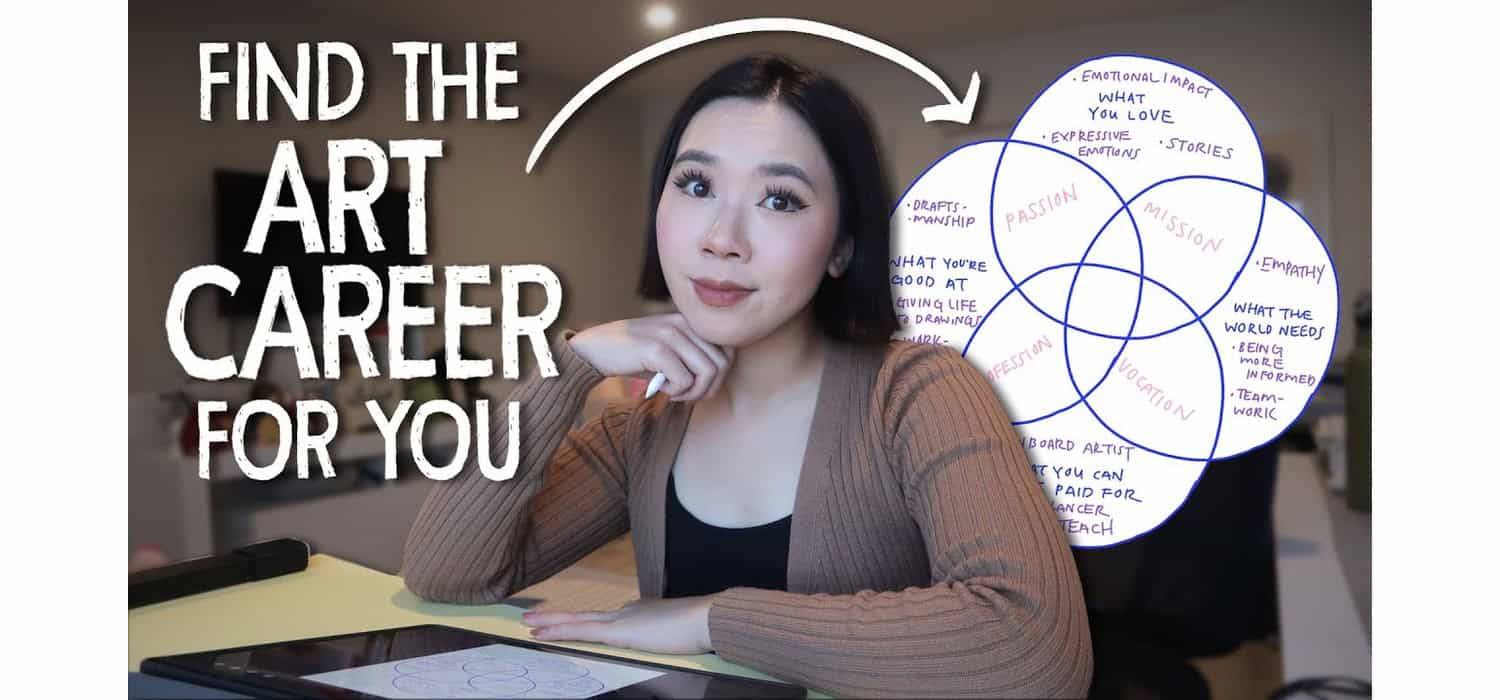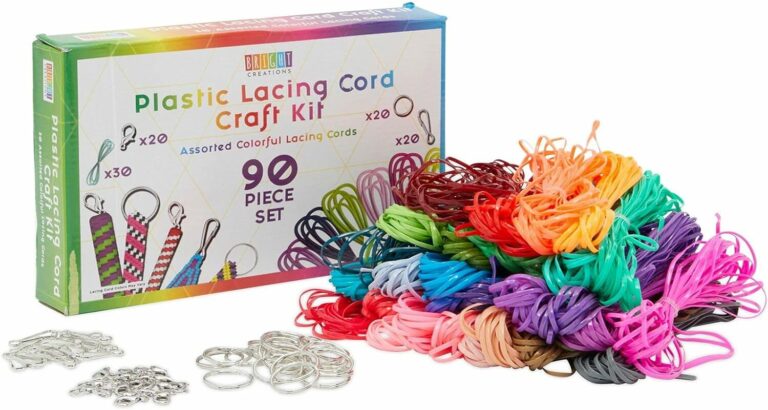Are you dreaming of turning your passion for art into a sustainable career? The art world might seem daunting, but with the right strategies, you can carve out your own niche. This article will guide you through essential steps to transform your artistic skills into a profitable venture.
To make art a career, focus on building a strong portfolio, network extensively within the art community, and continuously improve your skills. Consider selling online, participating in exhibitions, and possibly teaching your craft.
Keep reading to uncover actionable tips and insights that will help you navigate the challenges of the art industry. Let’s make your creative dreams a reality, starting today!
Understanding the Art World
The art world offers diverse career paths, each with its unique requirements and rewards. Artists can pursue traditional roles like painting and sculpture or explore digital realms like graphic design and animation. Curators and art historians focus on the interpretative and educational aspects, requiring a deep understanding of art history and market trends. Art therapists use the creative process to aid healing, necessitating qualifications in both art and psychology.
Passion and Persistence: Keys to Success in Art Careers
Pursuing a career in art isn’t just about talent; it’s about resilience. Passion fuels your creativity and inspires you to keep pushing boundaries, even when the journey gets tough. Persistence is crucial, as the path to success in art often includes facing rejection and continuing to refine your skills. According to ARTDEX, artists who consistently engage with their community and remain dedicated to their craft are more likely to establish a successful career. Continually learning and staying updated with industry trends are also pivotal in keeping your artistic pursuits relevant and vibrant.
Why These Qualities Matter
In art, your unique voice and vision are your most valuable assets. The art world values authenticity and individuality, which are fostered through a deep commitment to your work and an unwavering passion for expressing your inner world. The artists who thrive are those who do not shy away from challenges but embrace them as opportunities for growth and innovation.
Remember, each step you take in the art world is a step towards mastering your craft and understanding your market. Whether you’re selling your first piece or setting up your latest exhibit, passion and persistence are your best allies.
Educational Pathways in Art
The debate between formal education and self-taught approaches in art is longstanding. Formal education provides a structured environment where you can learn from experienced instructors and receive feedback from peers. Art schools offer access to resources like studios, galleries, and networking opportunities that might be difficult to find independently. On the other hand, being self-taught allows for a more flexible and personal learning experience. It encourages self-discipline and innovation, as you explore techniques and styles at your own pace without curriculum constraints.
Advantages of Academic Degrees in Art
Pursuing an academic degree, such as a Bachelor’s or Master’s in arts, comes with significant benefits. These programs teach technical skills, critical thinking, art history, and theoretical knowledge, which are crucial for a deeper understanding of the art world. Degrees often open doors to higher-paying jobs in academia, galleries, and large projects that require formal qualifications. They also provide credentials that can lend credibility when applying for grants or residencies.
Online Education and Career Outcomes
Online education has revolutionized access to art instruction, allowing more people to study from anywhere in the world. Platforms like Career Karma AI highlight that online programs can offer the same rigor as traditional art schools, with the added convenience of flexible schedules. These programs range from professional certificates to full degrees and often include virtual workshops and live critiques.
Career outcomes from online art education are promising. Graduates can pursue careers in digital media, animation, graphic design, and more. Many online institutions also have partnerships with art studios and tech companies, facilitating job placements for their graduates. Additionally, the skills learned online are directly applicable to freelance opportunities, a popular choice among digital artists.
Whether through formal education, self-taught methods, or online courses, each educational pathway offers unique advantages that can help you shape your career in the arts. It’s important to consider your personal learning style, career goals, and the kind of art you want to pursue when deciding on your educational journey. Remember, the right education can significantly enhance your technical abilities, expand your professional network, and increase your exposure to opportunities in the global art market.
Building Your Art Portfolio
A professional art portfolio is your visual resume; it showcases your skills, style, and versatility. It’s crucial to present a diverse portfolio that not only displays a range of techniques and mediums but also tells a coherent story about who you are as an artist. This diversity helps potential clients or galleries see your breadth of ability and assures them of your adaptability to different artistic demands.
What to Include in Your Portfolio
To make your portfolio appealing to galleries or clients, consider the following tips, informed by insights from Art in Context:
- Showcase Your Best Work: Include pieces that best represent your skill and artistic vision. Quality over quantity is key.
- Variety: Display a range of mediums and styles. This variety shows your versatility, a desirable trait for potential collaborations with galleries or varied client projects.
- Include Personal Projects: Personal projects highlight your initiative and passion. They can also show your deepest creative impulses, making your portfolio more engaging.
- Contextualize Your Art: For each piece, provide a brief description that includes the medium used, the concept behind the work, and any other details that add depth to your artistry.
- Updated Work: Regularly update your portfolio with new works. This demonstrates your ongoing commitment to growth and adaptation in your art career.
- Presentation: Ensure that the presentation of your portfolio is professional. Use high-quality images and a clean, accessible format, whether digital or physical.
Your portfolio is an integral tool in your art career. It’s not just about showing what you’ve done; it’s about showcasing what you’re capable of achieving in the future.
Navigating the Business of Art
Artists need more than just creative skills to thrive; they also require a strong grasp of key business practices. Financial management is crucial, as it helps artists budget for supplies, manage income from art sales or commissions, and plan for financial stability. Marketing skills are equally important, allowing artists to effectively promote their work and build a brand that attracts attention and drives sales. Legal knowledge—including copyright laws, contract negotiation, and understanding artists’ rights—protects an artist’s work and ensures fair treatment in the marketplace.
Learning About Art Marketing and Sales
Understanding the nuances of art marketing and sales is vital for any artist looking to make a living from their craft. According to ARTDEX, artists who actively learn and apply marketing strategies tend to achieve greater visibility and higher sales. This includes mastering online platforms, using social media effectively, and networking at art shows and galleries.
Tips for Effective Art Marketing
- Develop a Strong Online Presence: Create a professional website and engage regularly on social media platforms where art collectors and enthusiasts gather.
- Utilize Email Marketing: Build an email list to share updates about new pieces, upcoming shows, and exclusive offers.
- Attend Art Fairs and Exhibitions: These events are crucial for networking, showcasing your art, and building relationships with galleries and collectors.
- Understand Your Audience: Tailor your marketing efforts to appeal to the specific tastes and preferences of your target audience.
Navigating the business side of art can be as challenging as it is essential.
Networking and Making Connections
In today’s digital age, social media and online platforms are invaluable tools for artists looking to showcase their work and expand their reach. Platforms like Instagram, Pinterest, and Behance are particularly popular among artists for their visual focus and large, engaged audiences. By regularly posting high-quality images of your work, sharing behind-the-scenes processes, and engaging with followers, you can build a strong online presence that attracts both fans and potential buyers.
Participating in Art Competitions and Craft Shows
Art competitions and craft shows play a critical role in an artist’s career by providing exposure to new audiences and opportunities to network with other artists and industry professionals. Participating in these events can also enhance your credibility and provide valuable feedback on your work. Winning or simply participating in well-regarded competitions can be highlighted in your resume and artist biography, which can open doors to gallery representations and art commissions.
Benefits of Networking with Other Artists and Art Professionals
Networking with peers and industry experts is crucial for growth and success in the art world. According to The Art Career Project, connections made through networking can lead to collaborative projects, gallery placements, and insider information on upcoming opportunities. Engaging with other artists can also provide moral support, inspiration, and constructive criticism, helping you refine your craft.
Tips for Effective Networking in the Art World
- Join Professional Associations: Being part of professional art associations can provide you with resources, educational opportunities, and exclusive networking events.
- Attend Gallery Openings and Art Events: These are excellent places to meet other artists and professionals who can provide insights and potentially advocate for your work.
- Utilize Online Forums and Communities: Participate in online discussions and groups specific to your art form. This can be a great way to connect with like-minded artists and experts worldwide.
Conclusion
In the ever-evolving world of art, understanding various educational pathways, building a robust portfolio, mastering the business of art, and effectively networking are key to turning your artistic passion into a sustainable career. Leverage social media, participate in competitions, and connect with other art professionals to enhance your visibility and opportunities. Share your experiences and tips with us in the comments below or on our social media pages to join the conversation and help inspire others in their art careers!
FAQ Section
1. What are the best social media platforms for artists?
Instagram, Pinterest, and Behance are ideal for artists due to their visual-centric approach, allowing for high-quality image sharing and engagement with a global audience.
2. How do art competitions benefit an artist's career?
Competitions can increase exposure, offer professional feedback, and enhance your resume, making you more attractive to galleries and potential buyers.
3. What skills are essential for a successful art career?
Key skills include creativity, marketing, financial management, and networking. Continuous learning and adaptation to new techniques and trends are also crucial.
4. How can artists effectively use online platforms to sell art?
Creating a professional online presence, utilizing SEO strategies, and engaging directly with followers can significantly boost online art sales.
5. Why is networking important for artists?
Networking can lead to collaborations, exhibitions, and opportunities to sell your work. It also provides support and vital industry insights.

I am Sammy and I blog at Live it. Love it. Make it. It is creative lifestyle blog run by best friends H and Sammy. Head over and follow our crafty adventures!





